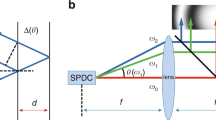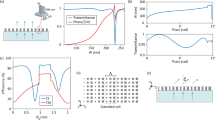Abstract
THE advent of the aluminized glass mirror has done away with many of the difficulties of making diffraction gratings of large size and unique properties. Some years ago, after some preliminary experiments in diamond grinding and adjusting, we ruled a six-inch three-metre concave grating with 15,000 lines to the inch which threw about 80 per cent of the light into one first-order spectrum. This estimate was made with a photo-electric cell and the light of a high-intensity mercury arc passed through a green filter.
This is a preview of subscription content, access via your institution
Access options
Subscribe to this journal
Receive 51 print issues and online access
$199.00 per year
only $3.90 per issue
Buy this article
- Purchase on Springer Link
- Instant access to full article PDF
Prices may be subject to local taxes which are calculated during checkout
Similar content being viewed by others
Author information
Authors and Affiliations
Rights and permissions
About this article
Cite this article
WOOD, R. Recent Improvements in Diffraction Gratings and Replicas. Nature 140, 723–724 (1937). https://doi.org/10.1038/140723a0
Published:
Issue Date:
DOI: https://doi.org/10.1038/140723a0
This article is cited by
-
Diffraction Gratings ruled in Metallic Films
Nature (1938)
Comments
By submitting a comment you agree to abide by our Terms and Community Guidelines. If you find something abusive or that does not comply with our terms or guidelines please flag it as inappropriate.



